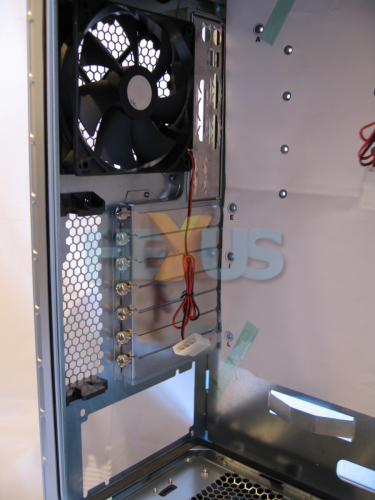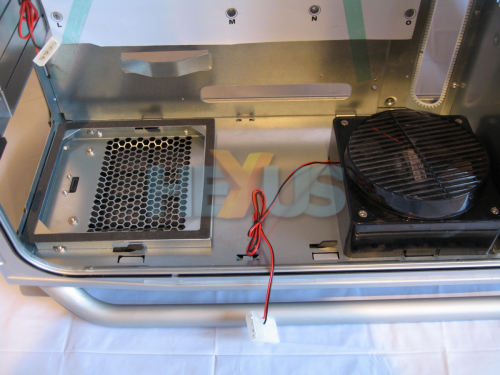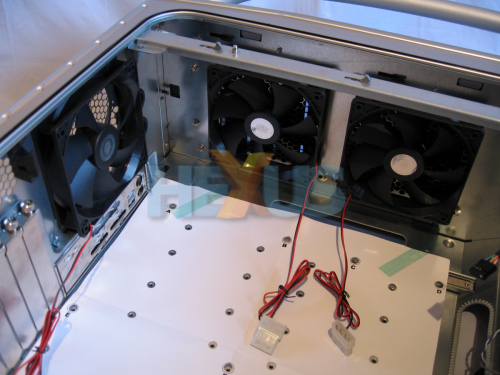PSU and pre-fitted airflow
Now for a closer look at various other areas around the case.
Down low are noise-absorption strips surrounding the grill at the very bottom and on which the PSU sits. And, of course, if you use a PSU with an input fan on its bottom, then air will be drawn in through the grill.
To the rear of the HDD caddies is the only fan in the Cosmos that's configured to draw air into the case. The fan takes its power via a Molex connector (so there's no speed control) and the air it draws in come though the filter on the bottom of the case and near the front that we mentioned earlier. The grill on the plastic fan cover directs the airflow towards the motherboard .
With the case on its side, we see the some of the break-out plates for PCI cards, with each plate is secured by a thumb-screw. We'd normally welcome that arrangement even though we tend to want to use a screwdriver to loosen and tighten such screws. Trouble is, the screwdriver couldn't get onto the screws straight on - it was held away by the all-round plastic trim against which the side panel sits when it's in place.
Above the I/O plates is a 120mm fan that's 25mm deep and, once again, powered from a Molex connector. Cooler Master reckons the fan is quiet - only producing 17dBa.
As well as the rear 120mm fan, there are two of the same size mounted on the underside of the top (Molex-powered again). These extract air through the Alien-styled grill that you saw in an earlier shot of the rear of the case.
Now, this is where we need to re-visit the whole business of air pressure within the Cosmos.
With three case fans drawing air out and only one drawing it in (we're disregarding the fans on the PSU), there is a pressure difference within the interior of the case. This forces the air to circulate through the case, working its way across the interior and cooling various components as it goes. And that's why there are fewer vents on the Cosmos than on most cases - otherwise the pressure differential inside couldn't be maintained.





